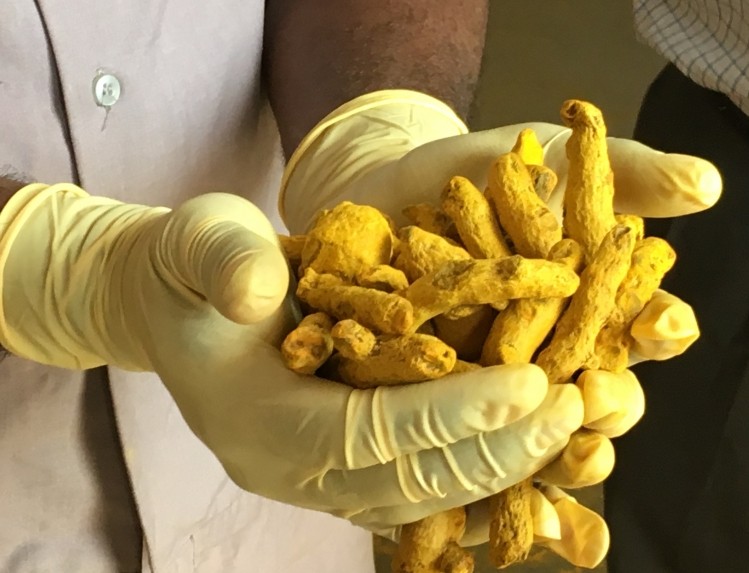Popularity of curcumin continues to drive ingredient innovation

The ingredient is experiencing blockbuster growth in some markets, most notably the US. Turmeric/ curcumin supplements were the top selling herbal supplement in the US natural channel from 2013-2017, but lost the crown last year as sales of CBD supplements surged in that channel, according to the 2018 Herb Market Report published by the American Botanical Council.
Despite dropping to number two, turmeric supplements still accounted for $51 million in sales in 2018, and $93 million in sales in the Mass Channel (HerbalGram 123).
Many forms on market
That demand has created opportunity for many different forms of the ingredient in the market. Much of this differentiation focuses on enhancing the bioavailability of a notoriously hard to absorb ingredient, and many studies extolling these improvements compare the newly engineered ingredients to unformulated curcumin.
But there is less and less unformulated curcumin on the market, as new high end forms crowd in. For example, Wacker has been broadening markets for its Cavacurmin ingredients, which it says in encapsulated with ‘naturally occurring oligasaccharide gamma-cyclodextrin.’ This results in a free flowing, easily dispersible powder that the company claims is more easily absorbed.
Italian ingredient supplier Indena was one of the first in this game with its Meriva ingredient, which consists of curcumin particles surrounding by the company’s patented Phytosome technology, which uses a phospholipid carrier to protect ingredients and enhance their absorption.
Another long time player in the curcumin field, Indian company Arjuna Natural Extracts , offers BCM-95. The extraction approach is said to bring along turmerones, the essential oils of the botanical, which again fuels the enhanced bioavailability claims. The ingredient is marketed in the US by DolCas.
Among other engineered branded curcumin ingredients are whey-protein (CurcuminPro); curcumin combined with rice flour, stearic acid, silica and magnesium stearate (CurcuFresh); curcumin spray-dried on porous silicon dioxide combined with triacetin and Panodan® (Micronized Curcumin); cellulosic derivatives complexed with a hydrophobic carrier and natural antioxidants (CurcuWIN from Omniactive) and a natural turmeric matrix formulation composed of carbohydrates, proteins, fiber and volatile oil (Acumin/Cureit).
2011 discovery opens door for new ingredient form
One of the pioneers of formulated curcumin ingredients is Sabinsa Corp, which has its headquarters in Bengaluru, India and has operations in New Jersey and Utah. Sabinsa’s worldwide president, Shaheen Majeed, said demand for the ingredient shows no signs of tapering off.
“The demand for curcumin has risen year over year, likely driven by a combination of new research continuing to be published, health care provider recommendations, and positive word of mouth. New delivery systems like beverages and gummies are fueling growth as well,” he said.
Majeed said a 2011 study by Hassaninasab et al. discovered that curcumin undergoes a unique metabolic process, involving an enzyme produced by intestinal microorganism, E. coli, in which the curcuminoids are converted to tetrahydrocurcumin. This discovery formed the basis of one of Sabinsa’s newer forms of the ingredient, branded as C3Reduct, which consists of 95% tetrahydrocurcuminoids.
Sabinsa also offers its standard C3 Complex, standardized to 95% curcuminoids and which the company bills as the No. 1 most clinically studied curcumin brand. The ingredient is often offered in conjunction with a small dose of Sabinsa’s BioPerine black pepper extract to boost absorption.
Beverage opportunity?
Majeed said one of big opportunities for curcumin ingredients comes form the new dispersible forms, one of which Sabinsa offers. Turmeric beverages are big in some markets, like Japan, but have yet to take off in the US market.
“Curcumin beverages have been very popular for some years in many other countries, but not the US. My theory is that Americans aren’t as comfortable with beverages that need to be shaken because they don’t fully disperse. That may explain the popularity of turmeric lattes! A current trend is towards beverages for some supplements rather than tablets and capsules, and we see indications that our dispersible form will benefit from that trend. It’s still fairly new.The latest formulated Curcumin C3 Dispersible that Sabinsa is offering did win a Tasting Centre Award for the Best Functional Beverage in last year’s VitaFoods Asia show which took place in Singapore,” he said.
























